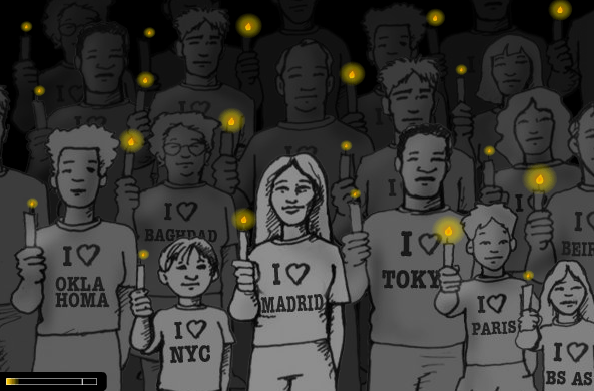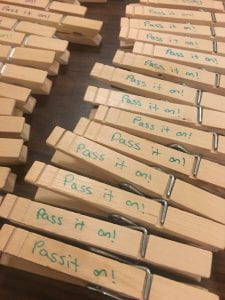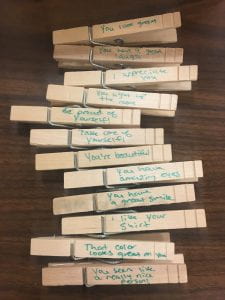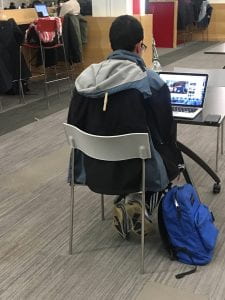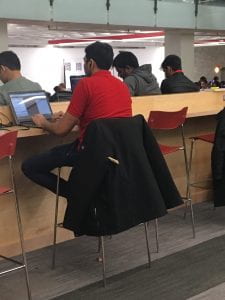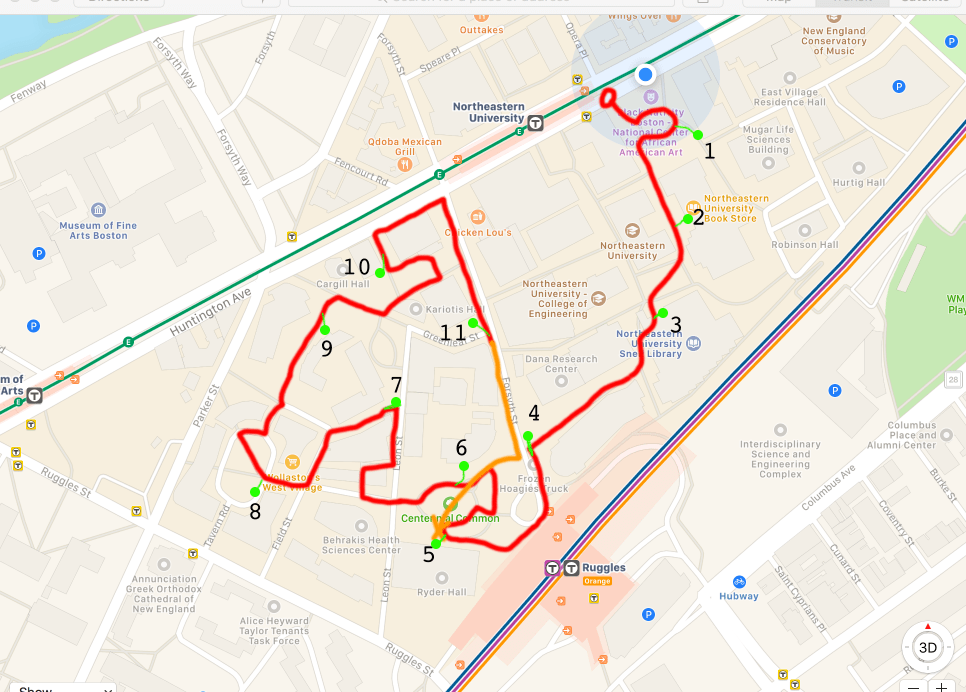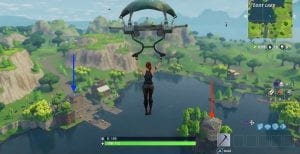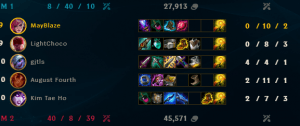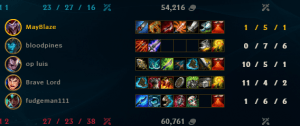Summary
Conspiracy Crafting is an intervention in which 3-4 participants are asked to observe and capture seemingly disconnected and mundane elements they observe throughout their everyday life, and somehow connect them into a one chain of related clues or events. Players must pin each “lead” or “clue” onto a billboard, and connect clues to one another using red twine.
Materials
- 1 Large billboard
- 1 spool of red twine/yarn
- A small box of thumbtacks or red pins
- Open minds and creativity
The Rules
First, assemble a team of 3-4 players who are willing to participate in this week-long intervention.
Then, determine where the team’s “office” will be. The “office” will be the space where the billboard is kept, and players gather to discuss their findings (Find someplace safe and secure, you wouldn’t want any spies to interfere with your sleuthing).
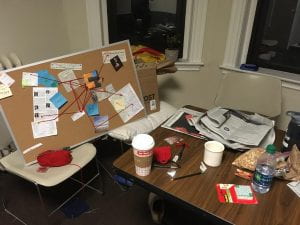
The (perfectly messy) “office” space.
After the team is gathered in the office for the first time, all players must agree on a single “clue” present in the room to pin on the board as the first lead. After the prime lead is decided upon, the intervention begins.
For the following week after the prime lead is pinned, players must gather whatever they deem to be clues that could somehow relate to the conspiracy in their mind. Be it newspaper clippings with interesting headlines, pictures of places that may fit into your theory, or perhaps the series of numbers on a dinner receipt, any mundane object could possibly be a clue. It is up to the player’s discretion to link their everyday occurrences and findings, to the possible conspiracy at play. Players are free to come into the office and pin their leads, as well as discuss them among themselves over the course of the week.
The player’s objectives are to fill the billboard with as many clues as possible by the end of the time limit, and come up with a single solid conspiracy based on the connected clues present on the billboard.

The first atttempt’s final results.
Inspiration & Statement
The concept I was going for with this game was to simulate activities with meaning as I’ve seen in several interventions, the main inspiration being The Jejune Institute. The Institute in particular was a great inspiration for this intervention in part to the nature of what it was intervening. Not only did it take place in the real streets of San Francisco, overlapping and seeping into the lives of players and participants alike, but it brought with it a great deal of meaning and surrealism to the participating players, as an intervention of their everyday mindsets. As I was able to discern, The Institute was an intervention with a purpose of bringing a sense of fantasy and intrigue to otherwise jejune aspects of life. It was an exercise in seeing through the everyday cycle and finding something to be invested in, some feeling of wonder. I found that motive fascinating, and tried to capture that same sort of feel with this intervention.
The nature of this intervention is also very much based on the cliche of an obsessed theorist, tirelessly connecting dots on a mysterious murder case or other hidden conspiracy. It’s a sort of cliche that’s widely used in media.
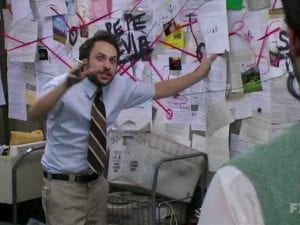
Charlie Day, demonstrating the cliche.
I took this convention and brought it to life in form of this intervention, because I thought the exercise of trying to find a method in the madness of a conspiracy theorist, is a good parallel to the motive of connecting real life to the extraordinary.
Overall, I thought the game succeeded in its attempt to interfere with a mind-space at the least. It wasn’t quite able to intervene with a physical space outside that of the chosen “office” space, but what the game asks of the players still very much seemed to open their eyes to zany, often humorous (im)possibilities abstracted from banal artifacts in their everyday life.

